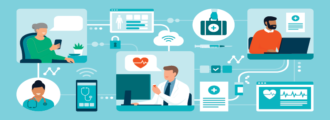One of the challenges healthcare organizations face is connecting a diverse set of systems while simultaneously ensuring that all the information in those systems can be shared easily and in a variety of formats. It’s become an expensive and complicated process trying to maintain the point-to-point connections among all these systems—not to mention making sure that clinical data is exchanged seamlessly.
One tool that many healthcare organizations are using to enable their interoperability and integration efforts is the Infor Cloverleaf Integration Suite. With each update, the solution delivers even more functionality to help healthcare organizations handle complex integration and data exchange challenges.
Our consultants have helped many healthcare companies move to the newest version of Cloverleaf, so we decided to take that experience and share our best practices for upgrading. Let’s get started.
1) Documentation is Key
As you can imagine, there are thousands of moving pieces involved in any upgrade, and if one of those pieces gets overlooked, forgotten, or changed, it can impact the entire project. It’s a bit like assembling an incredibly complicated pocket watch—if you put everything together and find that you still have a cog or a spring left over, it’s not going to run correctly.
That’s why we always stress the importance of detailed documentation with projects like these. Some of the biggest issues happen when people have inadequate documentation, or it’s not being followed (or both). Before kicking off the project, have a plan to document, and stick to it.
2) Develop a Testing Scenario
Testing is a vital part of any upgrade. Your test plan should be a living document that’s updated regularly. If everyone follows a true test plan and documents it accordingly, upgrading can be a smooth process.
Another thing to consider is a parallel testing plan. This is when you test the upgrade vs. your current version. During these tests, you can make sure all of your messages, various scenarios, and downstream systems have the right data. We consider this the ideal testing strategy to make sure everything in the new update works as planned rather than the “all-or-nothing” approach.
3) Take Care of the To-do List
One of the best things about going through an upgrade with Cloverleaf is that it gives you an opportunity to go back to square one. All those items on your to-do list can easily be fixed during an upgrade without a lot more work. So, consider all the changes and fixes you’ve wanted to get to for a while and just add them to the upgrade. Voila! Two birds with one stone.
4) Customized Training
With the new features and functionalities involved in an upgrade, you’ll need to consider a training plan for your team. Cloverleaf provides its own training and certification levels, which are important for developing the foundational knowledge. However, because Cloverleaf allows clients to build the same interface in many different ways, one training could be completely irrelevant if you’re using the system differently.
That’s why customized training specific to your system really is that valuable, and why a cookie-cutter strategy is likely to crumble. Tailored training will help your team become more familiar with your unique system and maximize the investment of the upgrade. After all, you can only take advantage of an upgrade’s efficiencies if your people know how to do so.
5) Work with a Cloverleaf Consultant
A third-party consultant brings senior-level expertise to your project and can give you a better perspective on how to improve your solution. As an example, One of our Cloverleaf consultants recently helped a large healthcare system upgrade their solution—even with the challenges of the pandemic.
With his 20+ years of Cloverleaf experience, he’s helped them see new enhancements, as well as provide that valuable customized training on their solution. Read our article about the project, “How a Hospital System Remotely Upgraded Cloverleaf During the Pandemic” to learn the benefits of working with a Cloverleaf consultant.
Get Started with the Latest Features
API interoperability, particularly with the use of the HL7 FHIR standard interoperability, is moving very quickly in healthcare. By upgrading to the newest version of Cloverleaf, healthcare providers can begin leveraging FHIR and API-based data exchanges.
If you’d like to spend less time managing servers and applications and more time focusing on patient care and business outcomes, our senior-level Cloverleaf consulting team can get you there. Contact us today to get started.




